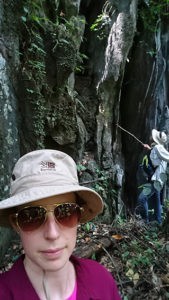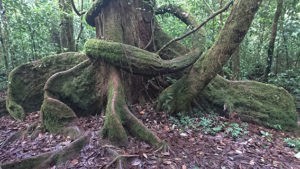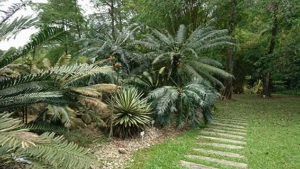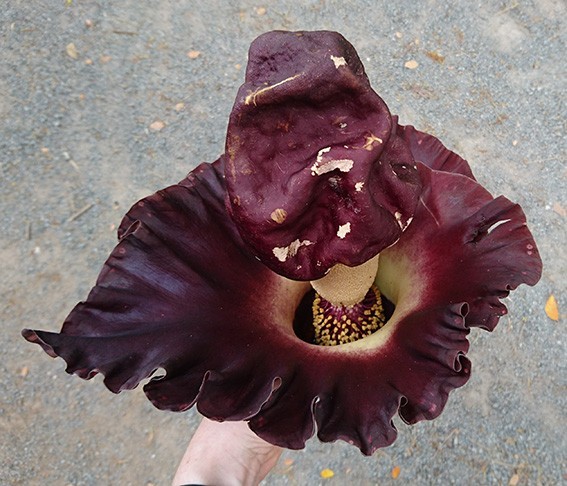I think that every scientist, regardless of their field, can tell you what it was that made them decide on a career in science. For some there is one moment that really sparks their interest, a single point in time where they first think “This is what I want to do” and for others it is more gradual.

Doing field work in a limestone area near Vang Vieng, Lao PDR
For me it was a more gradual process. My parents are both scientists (although from very different fields) so I was always encouraged to investigate the world around me. The first time I remember thinking that I wanted to have a job dealing with the natural world was when I was eight. I’d been gifted a childrens’ book on ecology and I was fascinated. The Amazon Rainforest sounded amazing, and I wanted a profession that would let me travel there rather badly! My interest in science, but particularly natural science, continued to grow and I took all the relevant courses at school and university. I had pretty much decided on botany as my career path when I finished my undergraduate degree, and I dedicated the next few years to getting the funds together to allow me to pursue my dream postgraduate course overseas.

I photograph plants everywhere I go. This tree is in Vietnam, possibly a species of Fig.
There are still days when I have to pinch myself – I sometimes find it hard to believe that I am a real, live professional Botanist, and that I get to be one in this wonderful country. To me, plants are fascinating. So, I guess the question is, “Why botany?” why not medicine, or marine science, or veterinary medicine (although I did toy with the idea of this one for a bit) or meteorology?

The Cycad collection at the Botanic Gardens in Kuala Lumpur
Plants are deceptively simple and unimportant, but humanity owes them everything. It is the world of complexity and intrigue hidden under their seemingly simple exterior that makes them so interesting, and the power that they have (and have had for a long time) over life on Earth. I think that people sometimes forget that without plants we wouldn’t have air to breath, food to eat, water to drink, medicines to heal our hurts or materials to build our homes and products. When the first photosynthesising organisms evolved they did so to take advantage of the carbon dioxide in the atmosphere as fuel (they need this to photosynthesise). Their use of carbon dioxide, and production of oxygen, over the next few million years is thought to have altered the composition of the atmosphere significantly. This change allowed for the evolution of mammals, and eventually humans.

In the local markets in Phonsavan, Lao PDR. How many plants do you recognise?
The enormous diversity in plant species (approximately 400,000) provides an endless opportunity to discover all the weird and wonderful ways they go about their lives. From the pitcher plant that has evolved to be a shrew toilet (now infamous) to the tiny high altitude plants that take 50 years to grow a centimetre or two and the water lilies that are beetle love boudoirs, they are all unique. There is still so much we don’t know about them, even about the seemingly common, boring every-day plants we use all the time. It’s this thrill of discovery, that has me hooked and keeps me coming back.
I hope that you’ll pause for a minute to observe a plant more closely when you next encounter some green space, and perhaps spare a thought for the amazing green engineers that fuel this planet.
By Bryony Smart, PTK Botanist

Isn’t it amazing what nature can create? This flower smells bad to attract flies as pollinators.


